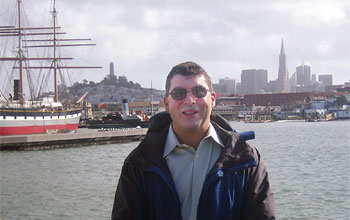Tony Gomez is still haunted by the fatal shooting. When he was a college student, his best friend's five-year-old got hold of the family's gun and unintentionally shot himself in the chest. "That was in the Denver area and it was a terrible loss and hard on the entire community," says Gomez (BS, EH '84), a clinical faculty instructor in the School's Department of Health Services.

Tony Gomez
The Seattle area has had its share of gun-related tragedies, and Gomez knows all about them. As manager of the violence and injury prevention unit at Public Health – Seattle & King County, he, along with other members of the King County Child Fatality Review and King County Medical Examiner's Office, examined nearly every death of a child from firearms over the last 15 years. "It has given me passion and information that will forever change me," he says. "We have to do better as a community to prevent firearm deaths to children and all our community."
Every day Gomez goes to work he's also reminded of his own close call. A bullet is lodged in the floor near where he sits in the King County Chinook Building in downtown Seattle. It was one of several apparently random shots fired on Halloween Day in 2011 from an unknown gunman. One of the bullets struck a pedestrian in her hip, and another struck a third-floor courtroom at the King County Courthouse. The shooting is still unsolved.
After an executive order in February 2013 from King County Executive Dow Constantine to develop innovative prevention strategies based on data, Gomez and his colleagues began compiling the numbers. They reported that nearly 70 children (under 18) were killed by firearms in King County from 1999–2012. Another 125 were seriously wounded. Their report also found that the risk of a youth firearm suicide was nine times more likely in homes where guns were not safely stored. An estimated 31,000 households in King County had firearms that were easily accessible to children.
The research results prompted a partnership with 10 retailers, wholesalers, and 25 law enforcement agencies to promote the safe storage of guns—and a message that keeping firearms away from the reach of children is as important as buckling them up in the back seat of a car. Gomez and his staff re-launched efforts to work with local retailers to offer discounts ranging from 10 to 15 percent on the sale of select lock boxes, safes and trigger locks through the end of 2014. All customers have to do to get the discount is mention the agency's LOK-IT-UP website (www.lokitup.org) or "Public Health."
